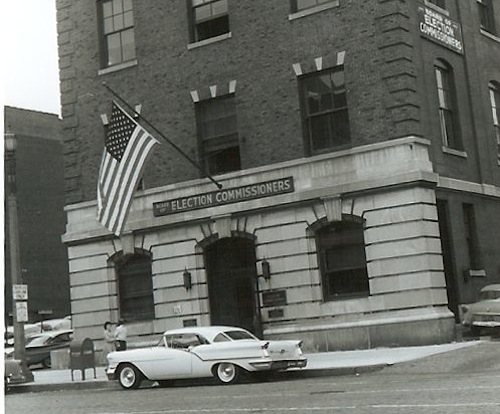Opinion: St. Louis Region Needs To Seriously Look At Our Low Voter Turnout Problem

The recent Sunday Poll was about voter turnout:
Q: Agree or disagree: Nothing will increase voter turnout in St. Louis’ local elections, it just is what it is.
- Strongly agree: 2 [8.7%]
- Agree: 1 [4.35%]
- Somewhat agree: 2 [8.7%]
- Neither agree or disagree: 3 [13.04%]
- Somewhat disagree: 2 [8.7%]
- Disagree: 6 [26.09%]
- Strongly disagree: 6 [26.09%]
- Unsure/No Answer: 1 [4.35%]
To those who agreed with the poll’s statement — wake up! There’s lots of ways to increase voter participation. First, we must step back and determine why exactly that eligible voters don’t bother for races other than the national election every four years.
One group is taking a step.
A group called Show Me Integrity is launching a petition drive to gather about 20,000 signatures to make a change to the St. Louis charter instituting “approval voting” in a nonpartisan primary for mayor, aldermen and other city offices. Under that system, recently adopted in Fargo, N.D., voters can cast a vote for as many candidates as they want. The top two vote-winners would advance to a runoff that would replace the general election.
St. Louis is among only a handful of major cities that still uses a partisan system allowing a plurality of voters through a party primary and general election to choose leaders.
“That’s increasingly rare,” said Rob Richie, executive director of FairVote, a Washington-based organization that advocates for election reform.Most big cities have election systems established so more consensus can emerge from a crowded field. Chicago is gearing up for a runoff election with the top two vote winners after whittling down a field of 14 candidates in February. Next month, Kansas City’s nonpartisan mayoral primary will send the two top candidates out of a field of 11 to a June matchup. Closer to home, Maplewood and Richmond Heights hold runoff votes if candidates don’t receive a majority. (Post-Dispatch)
This is new to me, so I’m not yet sure how I feel about it. That said, I welcome their action and the civic discussions it’ll cause.
I’ve been a longtime supporter of ranked-choice voting, aka instant runoff voting.
Ranked choice voting (RCV) makes democracy more fair and functional. It works in a variety of contexts. It is a simple change that can have a big impact.
With ranked choice voting, voters can rank as many candidates as they want in order of choice. Candidates do best when they attract a strong core of first-choice support while also reaching out for second and even third choices. When used as an “instant runoff” to elect a single candidate like a mayor or a governor, RCV helps elect a candidate that better reflects the support of a majority of voters. When used as a form of fair representation voting to elect more than one candidate like a city council, state legislature or even Congress, RCV helps to more fairly represent the full spectrum of voters. (FairVote)
Fair representation voting looks interesting:
Fair representation is the principle that a legislature should reflect all of the voters who elect them. Like-minded voters should be able to elect representatives in proportion to their number. In contrast, most elections in the United States are winner-take-all: instead of reflecting all voters, our legislators reflect only the biggest or strongest group of voters that elected them, leaving all others unrepresented. The use of winner-take-all voting methods in our elections for state legislatures and Congress is a central reason for major problems with our politics: gerrymandering, partisan gridlock, no-choice elections and distortions in fair representation all have roots in the inherent problems of winner-take-all methods. (FairVote)
See FairVote’s look at Open Ticket Voting, Cumulative Voting, Single-Vote Method & “Limited Voting”, and Districts Plus here. Other ideas include switching to non-partisan elections, thus eliminating separate partisan primary that’s the real election — the general election a month later just a costly formal confirmation of the Democratic primary.
We need to find the root problem(s) that cause voter turnout through much of the region to be low. Then we need to consider adopting solutions to solve those problems — without causing new problems.
— Steve Patterson